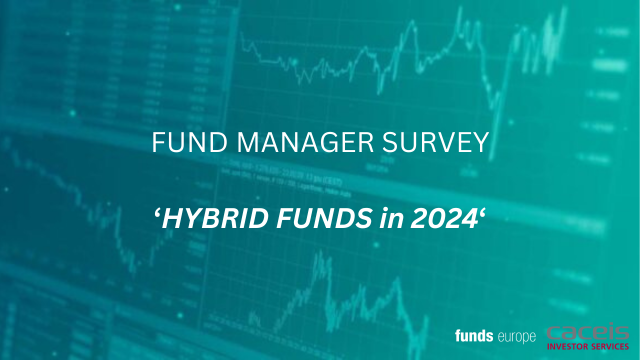The Eltif has gained wider recognition as private assets become ‘democratised’. But the UK also harbours the private-equity-based investment trust. Nick Fitzpatrick looks at differences in products, particularly over liquidity.
A significant beneficiary of the explosion of capital supply that low-interest rates spurred on in the 1980s was the private equity industry. Professional investors borrowed money for low rates of interest and used this debt to take ever larger equity stakes in companies. It became known as the “leveraged buy-out”.
At the other end of the spectrum is venture capital – smaller sums invested in typically younger companies. By the mid-2000s, private equity investment was commonplace enough to be turned into venture capital-based reality television – namely, the popular Dragon’s Den franchise that started in Japan but now spans many European countries.
Lately, the private equity market has entered a new phase. Through the LTAF in the UK and the Eltif in the EU, governments plan to allow a wider group of people to become ‘Dragons’.
The LTAF and Eltif are meant to allow smaller sums of money than typical to be channelled into private equity funds, and this is expected to pave the way for smaller DC pension schemes and even individual retail investors to gain private equity exposure.
A number of UK fund managers, including Schroders and Aviva Investors, have launched LTAFs – or Long-Term Asset Funds – in the UK, while Eltif applications have grown since amendments were made to earlier Eltif regulations in the past year.
Jean-Pierre Gomez, head of regulatory & public affairs at Societe Generale Securities Services (SGSS), says there has been an upswell in interest for Eltifs – European Long-term Investment Funds – following the EU’s introduction of “Eltif 2.0”, albeit not yet a “tremendous tsunami of new launches”.
“The amount of money raised by Eltifs, as well as the number of Eltifs set up, did not take off due to constraints under the current Eltif Regulation,” said Gomez, citing diversification rules as an example. The existing regulation – ‘Eltif 1.0’ – also has barriers to selling these funds to retail investors.
Eltif 2.0 regulations entered into force in April and will be applied from January 10, 2024. The regulation should lift some of the barriers. Gomez highlights several key changes, such as removing the €10,000 minimum investment amount for retail investors and the rule that investments in Eltifs should not exceed 10% of an investor’s portfolio.
Portfolio composition is also more flexible under Eltif 2.0, permitting a larger portion of liquid assets and less strict diversification rules, says Gomez. And while a suitability test exists for retail investors, there is no longer an obligation to provide investment advice – and retail investors could even give express consent to have the money invested in an Eltif even if suitability was not certain.
Ticket sizes
Yet in the UK, even before the recent introduction of the LTAF and revised Eltif, retail investors already had access to private markets – indirectly – through investment trusts.
On the London Stock Exchange, a number of investment trusts offering private equity exposure are listed, such as Harbour Invest Global Private Equity, Hg Capital Trust plc, NB Private Equity Partners and Pantheon International plc.
The LTAF and Eltif are set to make private markets more accessible partly by lowering the minimum investment amounts – the “ticket sizes” – that fund managers demand as minimum investments. Trusts, meanwhile, trading like listed companies, already offer access to illiquid, private assets by purchasing their shares for just several pounds.
In a 2021 webinar with Funds Europe, Jim Strang, chairman of Hg Capital Trust, noted private equity was available through the trust, at the time, for £3.40 a share.
There are around 30 listed vehicles on the London Stock Exchange, some with assets under management in the billions.
“[Private equity trusts have] been there for quite a long time, but what’s been happening more latterly is that private equity managers are trying to think about different means to expand the scope of what is addressable to the retail customer,” Strang told the webinar, regarding the Eltif.
Mansion House speech
At Pantheon, the manager of Pantheon International Plc, a private equity trust that invests globally and earlier this year reported a market cap of £1.4 billion, Alexander Denny, managing director, European private wealth, said the UK LTAF and EU Eltif – which are potential competitors to the private equity trust sector – could lead to smaller DC pension schemes and retail investors obtaining access to private markets, just as policymakers want.
“The UK LTAF was designed for DC schemes. However, structural challenges to their adoption remain yet to be overcome. It is partly why the Chancellor’s Mansion House reforms are needed to unlock further investment into private markets by DC schemes,” said Denny, regarding UK Chancellor Jeremy Hunt, who recently said he wanted to channel £3 trillion from UK DC schemes into UK companies, including start-ups, infrastructure and private equity.
“Generally, index-aware pension trustees need to be nudged to look at private markets. If they are, this should encourage major pension platforms to make more products available which offer this exposure, which hasn’t previously been a priority. This could be good for access to investment trusts as much as it is to LTAFs and other semi-liquid structures.”
Product suitability
Denny argues there is still a “hurdle of appropriateness and suitability” for investors who cannot tie up capital for the longer term. Private equity usually requires lengthy ‘lock-up’ periods for investors’ capital. Thus, he believes it is likely that the industry’s focus will remain on the high-net-worth to ultra-high-net-worth segments for anything but listed structures.
“These clients may already be considered professional investors or looked after by a wealth manager and can already access similar vehicles such as the [Luxembourg] Part II Sicav,” says Denny. Although he expects the prevalence of LTAFs and Eltifs among professional investors to grow, banks and wealth managers will likely be the main gatekeepers.
This trend will be less pronounced for individuals investing on their own. Denny expects trusts – with their stock market liquidity – to remain favoured by self-directed investors in the UK.
Liquidity risk: a real concern
A key complication for private equity investment for investors and fund managers is liquidity risk coupled with cash flow management.
Liquidity risk will be new to many retail investors whose only investing experience might be through investment funds that target shares or bonds in public markets, where cashing out of funds can be done within a day or even sooner with an ETF.
Gomez at SGSS says: “The management of liquidity risk for private assets is a real concern, as this type of asset is much less liquid than public financial assets. Real estate and private equity are, by nature, illiquid if you cannot find a counterpart to buy the asset. There is no public market for that investment.”
For instance, a sale of a property must follow several regulatory or compliance steps, such as anti-money laundering know-your-client checks – mostly carried out manually, says Gomez. Transactions cannot be settled in just a few business days.
According to Pantheon’s Denny, there are three main ways of addressing liquidity risk and associated cashflow complications, each with pros and cons depending on the investor’s profile.
At the top end, large and sophisticated investors may manage cashflows themselves, making sure there is capital available (“dry powder”) when a portfolio manager finds an investment opportunity and makes a “capital call”. Investors will likely be tied into the full life of the fund, usually several years.
Less sophisticated investors who want the higher returns of less liquid assets might favour semi-liquid funds like the LTAF and Eltif, which offer access to the underlying investments at net asset value (NAV), Denny says. There would be regular liquidity windows, but no guarantee of immediate exits, and redemptions would be restricted to about 20% a year. The complexity of cashflow management will be handled by the fund manager.
“For LTAFs and Eltifs, although cash flows should normally be relatively predictable if there are periods of increased redemptions, cash will have to be available, and it is likely that a bucket of cash and liquid securities will be held to cover those potential redemptions. This introduces an element of cash drag not present in the other vehicle types – but simplifies things for the investor,” says Denny.
Meanwhile, option three is the investment trust, in which liquidity exists because the trust’s shares are traded on the stock market, albeit there is the risk of shares trading at a discount or premium to NAV. A discount, for example, is where the shares of the trust are valued at a lower price relative to the valuation of the investments.
In rare cases, the trust may have to redeem underlying investments to meet redemptions, but careful management should mean redemptions are unnecessary.
Investment trusts are the most easily accessible vehicles by retail investors, at least in the UK, and are likely to remain so, but they are the most volatile, says Denny. But he thinks there is a use case for all these investment types – even by the largest and most sophisticated investors depending on their goal.
Denny says semi-liquid funds may themselves invest in trusts. “It will be interesting to see, in due course, whether investing in listed investment trusts becomes a potential way of maintaining liquidity in the portfolios of LTAFs and Eltifs while still offering an exposure to the same underlying asset class.”
Board control
There is much in common in how portfolio liquidity and cash flows are managed in the different structures, says Denny. “Key to it all is planning and having a good degree of predictability about likely cash flows into or out of the portfolio. This may be from subscriptions, redemptions, payment of dividends or distributions, or activities within the portfolio itself.
“Investment trusts generally don’t see redemptions unless there is a [share] buyback. In that case, the Board has control and discretion over whether to act. For semi-liquids, there are generally quarterly redemptions with notice periods so the manager has time to make adjustments where needed.”
This differs from, for example, open-ended property funds. In recent years, during times of market stress, these liquid funds were gated when the high rate of redemptions in the sector outpaced the ability of fund managers to sell illiquid properties. These funds, notes Denny, had daily dealing yet lacked any meaningful redemption notice periods.
A general risk management approach in private assets for the asset owner is to diversify by type, stage, sector, private equity manager, geography, and duration or vintage year. It is possible to balance investments into new funds with cash generated from the sale of portfolio companies. Funds may also maintain a revolving credit facility, which could be used if capital calls increase.
Rising tide
Denny says LTAFs and Eltifs open up wider distribution channels but come with greater investment restrictions than, for example, Part II Sicavs or investment trusts, which can invest more flexibly across a range of assets.
But Eltifs are likely to be widely adopted in European markets where penetration of investment trusts is generally lower. LTAFs may gain traction in the UK DC space – especially where private assets have not been considered previously, but Denny says this may also prompt some trustees to consider investment trusts for the first time.
Despite the threat of competition for the UK’s private-markets investment trusts, Denny says: “Penetration of investment trusts into the DC space, especially via major pension platforms, has been limited. But just as with semi-liquids, we hope the renewed focus on private markets will be a rising tide, lifting all boats.”
© 2023 funds europe





